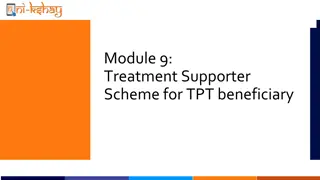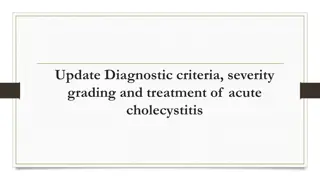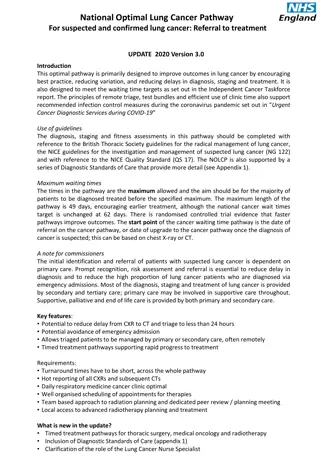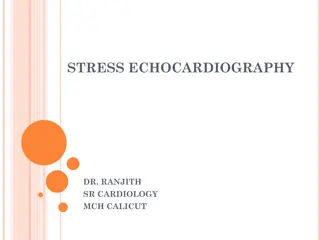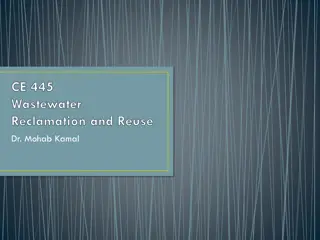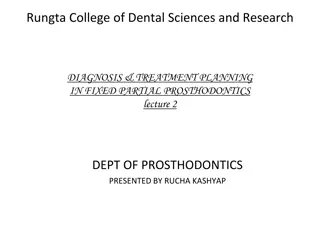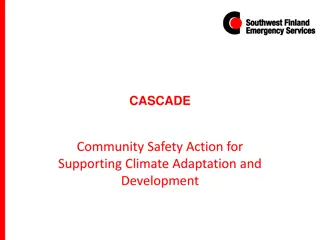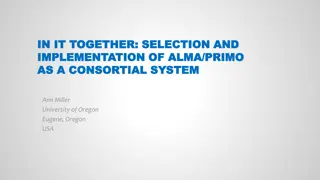
Improving TB Diagnosis and Treatment Cascade
In-depth examination of stakeholders' workshop on global TB estimates, justification for enhancing clinic-lab interface, proposed goals and objectives to enhance TB case finding and treatment initiation in Benue State, Nigeria.
Download Presentation

Please find below an Image/Link to download the presentation.
The content on the website is provided AS IS for your information and personal use only. It may not be sold, licensed, or shared on other websites without obtaining consent from the author. If you encounter any issues during the download, it is possible that the publisher has removed the file from their server.
You are allowed to download the files provided on this website for personal or commercial use, subject to the condition that they are used lawfully. All files are the property of their respective owners.
The content on the website is provided AS IS for your information and personal use only. It may not be sold, licensed, or shared on other websites without obtaining consent from the author.
E N D
Presentation Transcript
BACKGROUND Global Estimates in 20XX, XXM people developed TB XXM were notified to national TB programs XX% of global TB cases were missed by surveillance systems (*country*) Estimates in 20XX xxxxx people developed TB xxxxx were notified to national programs xxxxx were lab confirmed xxxxx were initiated on treatment
JUSTIFICATION (Cascade Data are Often Missing or Incomplete for the Clinic-Lab Interface) Cases Estimated Cases Lab-Confirmed Cases on Treatment Cases Notified
JUSTIFICATION (*country*) ranks Xth in global TB infection, with reported gaps in case finding and treatment The interface between clinics and lab services must be strengthened to optimize case finding and ensure all confirmed TB patients initiate appropriate treatment as quickly as possible Persons that screen positive for TB must be efficiently linked to TB laboratory services Persons that receive TB laboratory testing must receive accurate results quickly for clinical action
CLICQ! PROPOSED GOALS Diagnostic Cascade Improve TB case finding and initiation of TB Preventive Therapy or appropriate treatment initiation among HIV-positive and HIV- negative persons with presumptive or confirmed TB in Benue State, Nigeria Improve time-to-TB diagnosis and time-to-TB therapy or treatment among HIV-positive and HIV-negative persons with presumptive or confirmed TB in Benue State, Nigeria
CLICQ! PROPOSED OBJECTIVES Diagnostic Cascade Increase the number and proportion of HIV-positive and HIV-negative persons with presumptive TB that receive TB laboratory services and accurate test results in a timely manner Increase the number and proportion of HIV-positive and HIV-negative TB patients that initiate appropriate (drug-sensitive or drug-resistant) TB treatment Increase the number and proportion of HIV-positive persons that are confirmed to be without TB disease that initiate TB Preventive Therapy Reduce turnaround times associated with laboratory-confirmation of TB disease and initiation of appropriate TB therapy and treatment
PROPOSED PROJECT DESIGN PART ONE PRE-CLICQ! ACTIVITIES PART TWO DiCE ENTRY ASSESSMENTS PART THREE CLICQ! IMPLEMENTATION PART FOUR DiCE FOLLOW-UP ASSESSMENTS PART FIVE FINAL ANALYSIS AND WRITING WORKSHOP
TB CLICQ! WORKSHOP OVERVIEW DiCE Entry Assessments Workshop 1 Workshop 2 Facility Tour TB CLICQ! Overview Action Plan CQI Revisited DMAIC Revisited Data Display Creating a Run Chart Data abstraction CQI Overview Process Mapping Overview Process map activity Walk the process Update process maps Communication Plan Facility Presentations CONTROL Control Plan Data/Measurement Data entry ANALYZE Fishbone activity 5 Whys, Cause & Effect Diagram, Pareto Diagram, Spaghetti Diagram, Run Charts/Control Charts IMPROVE Simulation Before/After Result Communication Final Report Storyboard Presentation Data Analysis Opportunities for improvement Impact / Effort grid Site report writing PDSA / Small Test of Change Spread Best Practices Site Debrief LARC Overview Lean Celebrate Success DMAIC Overview 5S Visual Management Physical Layout Additional Tools Chart Review Avoiding Pitfalls DEFINE / MEASURE Project Outline Problem Statement Scope Aim Statement / Metric Standardized Work
PART ONE: BACKGROUND DiCE TOOL OVERVIEW Excel-based tool (can be printed) For collection of retrospective data from paper-based registers No personally identifiable information (PII) collected (e.g. names) Includes Data abstraction tabs and job aids Customizable Impact of CLICQ! Evaluates the diagnostic cascade including patient retention and turnaround times
DiCE Tool Adaptation and Use The tool is first customized to fit available data sources. Sample data sources; each will have a job aid
DiCE Tool Adaptation and Use Job aid tabs capture necessary steps of the cascade but can be customized to include specific language/appropriate order of the fields in the available data sources for ease of use.
DiCE Tool Cascade Analysis Once the job aids are filled in for a designated period, data from various sources then auto-populates to create a cascade, where gaps can be visualized. TB Diagnostic Cascade 364 364 350 285 285 285 285 300 250 200 150 100 37 37 37 50 17 0 1. Presumptive TB 2. Presumptive TB with specimen collected 3. Presumptive TB with specimen received by lab 4. Presumptive TB with specimen successfully tested 5. Presumptive TB with Xpert MTB/RIF test result 6. Presumptive TB with test result in clinic 7. Presumptive TB with Xpert "MTB Detected" result in lab 8. Presumptive TB with "MTB Detected" result in clinic 9. Patients initiating TB treatment 10. Patients cured or completing TB treatment
DiCE Tool Cascade Analysis Issue identified: More specimens collected than are received by the lab. TB Diagnostic Cascade 364 364 350 285 285 285 285 300 250 200 150 100 46% success rate. 37 37 37 50 17 0 1. Presumptive TB 2. Presumptive TB with specimen collected 3. Presumptive TB with specimen received by lab 4. Presumptive TB with specimen successfully tested 5. Presumptive TB with Xpert MTB/RIF test result 6. Presumptive TB with test result in clinic 7. Presumptive TB with Xpert "MTB Detected" result in lab 8. Presumptive TB with "MTB Detected" result in clinic 9. Patients initiating TB treatment 10. Patients cured or completing TB treatment
DiCE Tool Additional Outputs 1. 2. 3. 4. 14
PART TWO: DiCE ENTRY ASSESSMENT PRACTICAL CONSIDERATIONS Entry DiCE Assessment Teams FMOH, SMOH, CDC and Implementing partner select team members to participate in assessment Site points-of-contact are available - To provide facility walkthrough (patient and data flow) - To gather registers for data collection - To answer questions during the assessment Inconsistencies or challenges with data will be resolved on-site Entry DiCE Assessment Logistics Assessment time = 1 day per site(s) Site Department POCs: HIV Clinic, TB Clinic and TB Lab (on-site and/ or referral) at one facility
DATA COLLECTION AND QUALITY Project personnel that collect data will be trained and competent Aggregate data collected from paper registers Will include redundant data points as an internal quality check All data challenges and inconsistencies will be resolved prior to leaving facility DiCE completeness will be cross-checked prior to leaving facility Missing or unavailable data will be recorded as MISSING Patient data (no PII) from same registers Randomly selected patients from Presumptive TB register 5% of Presumptive TB register, up to a maximum of 20 Half will be HIV (+) and half will be HIV (-) to prevent non-random selection DiCE Quality Analysis Automatic calculation of agreement between data sources and completeness of registers CLICQ! Metric Data Recorded by site staff using site-specific metrics and tracking plans and quality reviewed during on-site visits
PART THREE: CLICQ! IMPLEMENTATION After site entry assessment, CLICQ! project begins Two facility-based workshops (~30 45 days apart) with all participants Workshop 1 (1 week) DiCE findings reviewed. Identified gaps prioritized Development of improvement projects and metrics to close gaps - Partner facilitators will assist facility staff in choosing projects and metrics to measure progress Workshop 2 (1 week) Improvement project review / course correction On-site TA Between each workshop with implementing partners, and any MoH personnel wishing to assist Every 1 2 weeks Remote TA using WhatsApp may be possible
Timeline 4 Months Program Review & Writing Meeting Program Sensitization & Launch Workshop 1 On-Site & Remote TA Workshop 2 Remote TA * * On-Site Patient Pathway Walk & DiCE Entry Assessment (1 day) DiCE Follow-Up Assessment (1 day) Facility Team Weekly Tracking of Improvement Project Metrics
PART FOUR: DiCE FOLLOW-UP ASSESSMENT Each enrolled facility will receive a DiCE follow-up assessment Follow-up assessments will be directly compared to entry assessments CLICQ! project impact will be quantified Review lessons learned, successes, challenges - Partner facilitators conduct this session with facility staff Stakeholder closeout
PART FIVE: FINAL ANALYSIS / WRITING WORKSHOP Final Site Presentations Site staff will present final data, achievements, and challenges Final Project Report Breakout groups will draft sections of report Data Sharing and Reporting Discussions on expectations for data sharing, reporting, and future publications
DATA SHARING AND REPORTING Data will be owned by the NTP De-identified DiCE and site metric data will be provided to stakeholders after each workshop and each DiCE assessment Results and recommendations will be made available to the following Participating facilities, NTP, SMoH, Partner, Funding Agency, US CDC Results will be in the form of reports, Excel spreadsheets, data tools, and PowerPoint presentations Confidentiality No PII will be collected Project staff will be instructed to protect the privacy of all patient data encountered during data collection
PROTOCOL DISCUSSION OUTLINE Review protocol for: Sections / content required for a CDC protocol Sections / content required for a (*country*) protocol Proposed sections Program Background and Justification Goals Objectives Project Design Region, State, province selection Site selections
ROLES AND RESPONSIBILITIES CLICQ! Organization (*other*) (*other*) SMoH SMoH NTP NTP (*partner*) (*partner*) CDC (*country*) CDC (*country*) US CDC ILB US CDC ILB US CDC GTB US CDC GTB Name Role ---- ---- ---- ---- ---- ---- ---- ---- ---- ---- ---- ---- ---- ---- Co-investigator Co-investigator Co-investigator Co-investigator Co-investigator Co-investigator Co-investigator Co-investigator Co-investigator Co-investigator Principal investigator Co-investigator Co-investigator Co-investigator Partnership with FMoH and SMoH (*Agency*) provides funding support and partner oversight APIN provides on-the-ground implementation of CLICQ! CDC-Atlanta and CDC-Nigeria provide technical support Facility support from healthcare workers and technicians Principal Investigator: Leads protocol development, ethical clearance and tool development; provides oversight for project implementation, data analysis and project evaluation; participates in report/ manuscript development; assists with dissemination of findings. Co-Investigator: Technical input on protocol development, tool development, project implementation, data analysis, project evaluation; participate in report/ manuscript development; assist with dissemination of findings.
ROLES AND RESPONSIBILITIES BY ACTIVITY (*ADD ROWS AND NAMES OF PARTICIPANTS AS NECESSARY TO COMPLETE*) Close-Out Workshop/ Writing Entry/ Exit Dice Assessments On-Site TA/ Monitoring Organization Name Workshop 1 Workshop 2 (*other*) (*other*) SMoH SMoH NTP NTP (*partner*) (*partner*) CDC (*country*) CDC (*country*) US CDC ILB Wendy Doe US CDC ILB Jack Doe X X X X US CDC GTB John Doe US CDC GTB Jane Doe X X X X
SELECTION CRITERIA FOR REGION, STATE, PROVINCE High burden of TB/HIV disease Ease of access (infrastructure, security, political stability) SELECTION CRITERIA FOR CLINIC AND LABORATORY SITES Currently included in the PEPFAR network High TB and/or HIV patient volumes Ensures sufficient patient need for measurable clinic-laboratory interface benefit On-site versus referral for initial Xpert MTB/Rif diagnostic testing services Captures potential differences in the clinic-laboratory interface associated with patient and/or specimen referral Site-to-site proximity Enhances cross-facility sharing, logistics, and ease of on-site mentorship visits Practical, on-ground knowledge Includes knowledge of gaps, planned strengthening activities, security, and infrastructure
Compile a spreadsheet of all potential clinics and laboratories in selected region Begin limiting sites based upon the following metrics: o Sites reporting: TX_CURR > 100 o Sites reporting: PositiveTB symptom screens AND treatment initiations > 0 o Sites within ~2hr drive from base/hotel (use ArcGIS or Google Maps) o Sites should be comprised of both on-site and referral TB diagnostic testing
(*Add the SEMI-FINAL compiled list of sites to this slide*) Allow relevant stakeholders (FMoH, SMoH, etc.) to make final site selections
REGION/STATE: SITE SELECTION FINAL LIST (*COMPLETE TABLE BELOW WITH INFORMATION ON TOP FOUR CHOICES*) NAME OF FACILITY CITY / TOWN ON-SITE / REFERRAL DIAGNOSTIC TESTING

